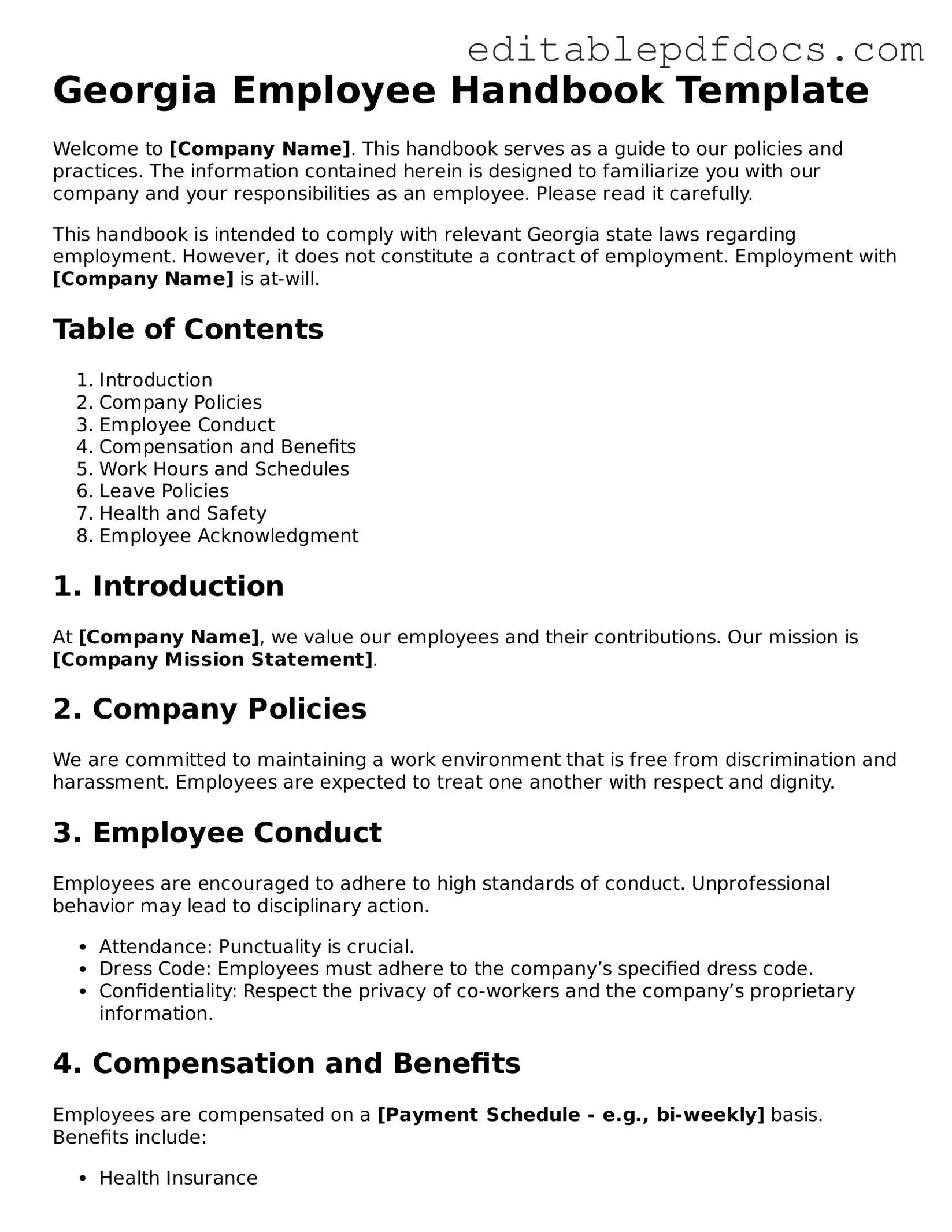Filling out the Georgia Employee Handbook form can be a straightforward process, but many people make common mistakes that can lead to confusion or delays. One frequent error is not reading the instructions carefully. Each section of the form may have specific requirements, and overlooking these can result in incomplete submissions.
Another mistake is failing to provide accurate personal information. This includes your name, address, and contact details. Even a small typo can create problems later on. It's crucial to double-check this information before submitting the form.
Some individuals neglect to sign and date the form. A signature not only indicates that you agree to the terms outlined in the handbook but also serves as a legal acknowledgment of your understanding. Without a signature, the form may be considered invalid.
Additionally, many people forget to keep a copy of the completed form for their records. Having a personal copy can be helpful if any questions arise in the future. It serves as a reference point should any discrepancies occur.
Another common oversight is not updating the form when personal circumstances change. For example, if you move or change your contact number, it’s essential to update the form to ensure that the employer can reach you when necessary.
Some individuals also overlook the importance of understanding the policies outlined in the handbook. It’s not just about filling out the form; it’s vital to comprehend the rules and regulations that apply to your employment. This understanding can help avoid potential conflicts down the line.
Moreover, people sometimes rush through the process, leading to incomplete sections. Each part of the form is there for a reason, and skipping questions can create gaps in information that might need to be addressed later.
Another mistake involves not asking questions when something is unclear. If any part of the handbook or the form is confusing, seeking clarification can save time and prevent misunderstandings. Employers typically appreciate when employees take the initiative to ensure they understand their responsibilities.
Lastly, some individuals fail to submit the form on time. Each employer may have specific deadlines for when the Employee Handbook form must be returned. Missing these deadlines can result in complications or even a delay in starting your job. Staying organized and aware of these timelines is essential.
